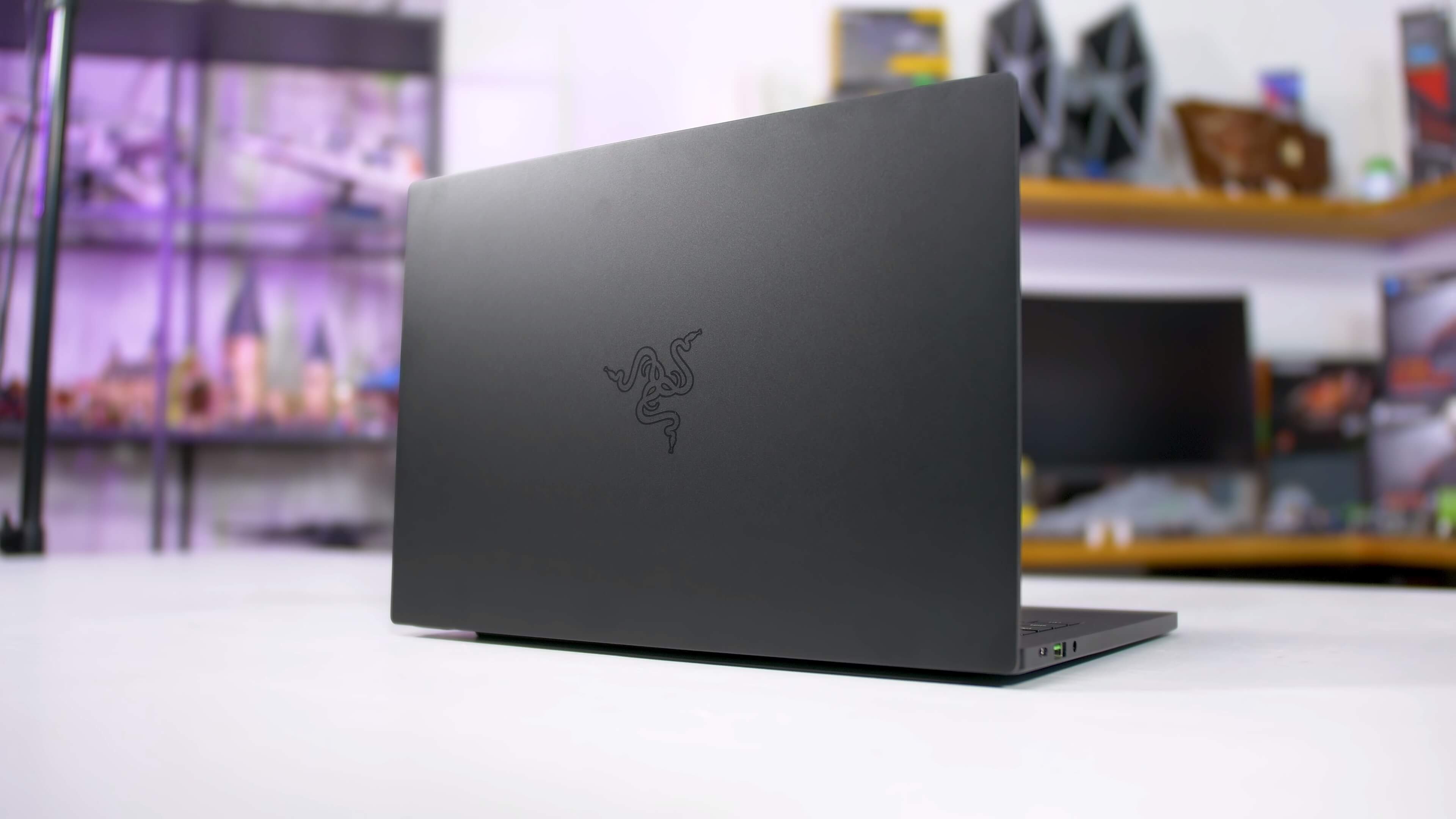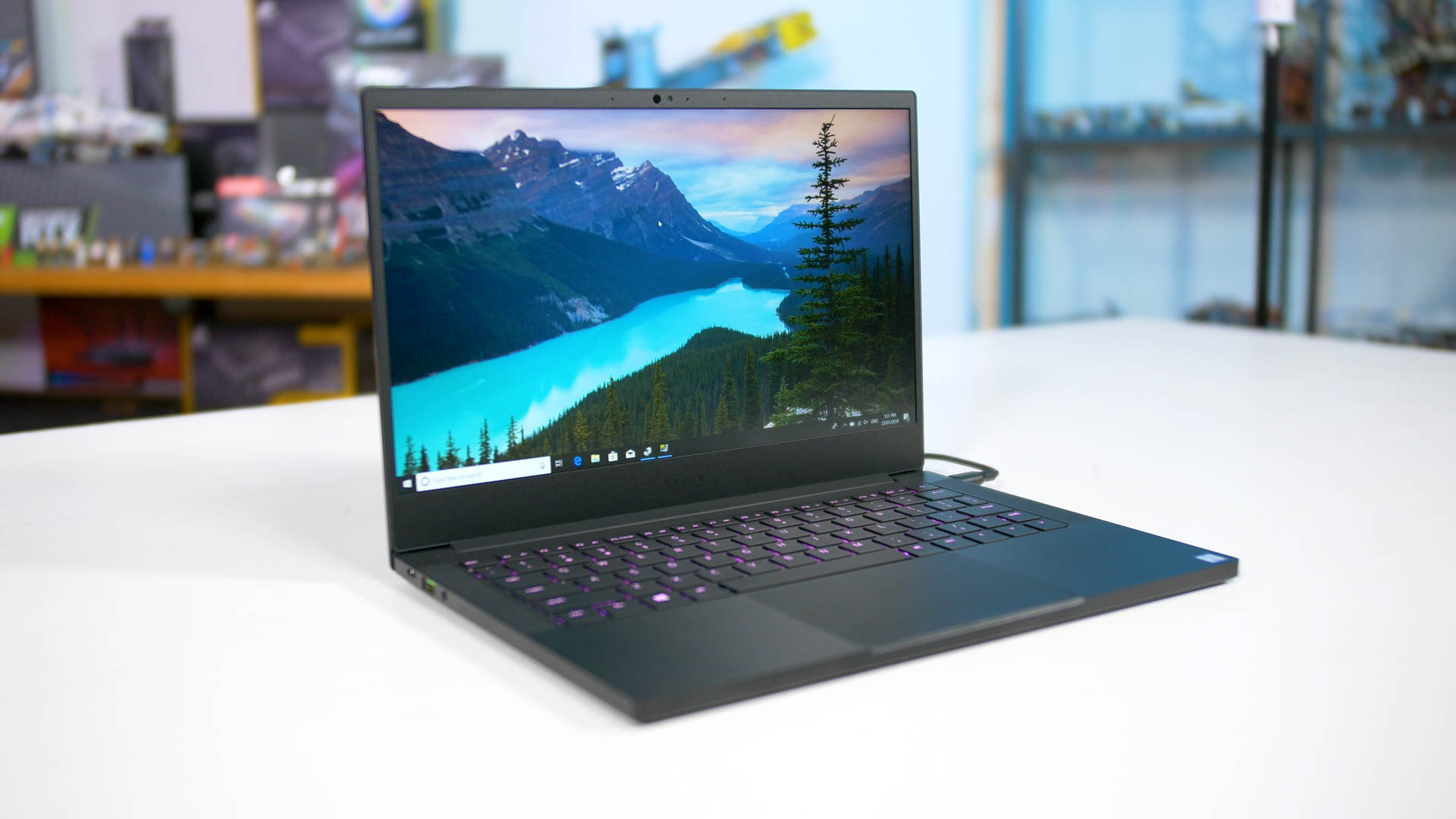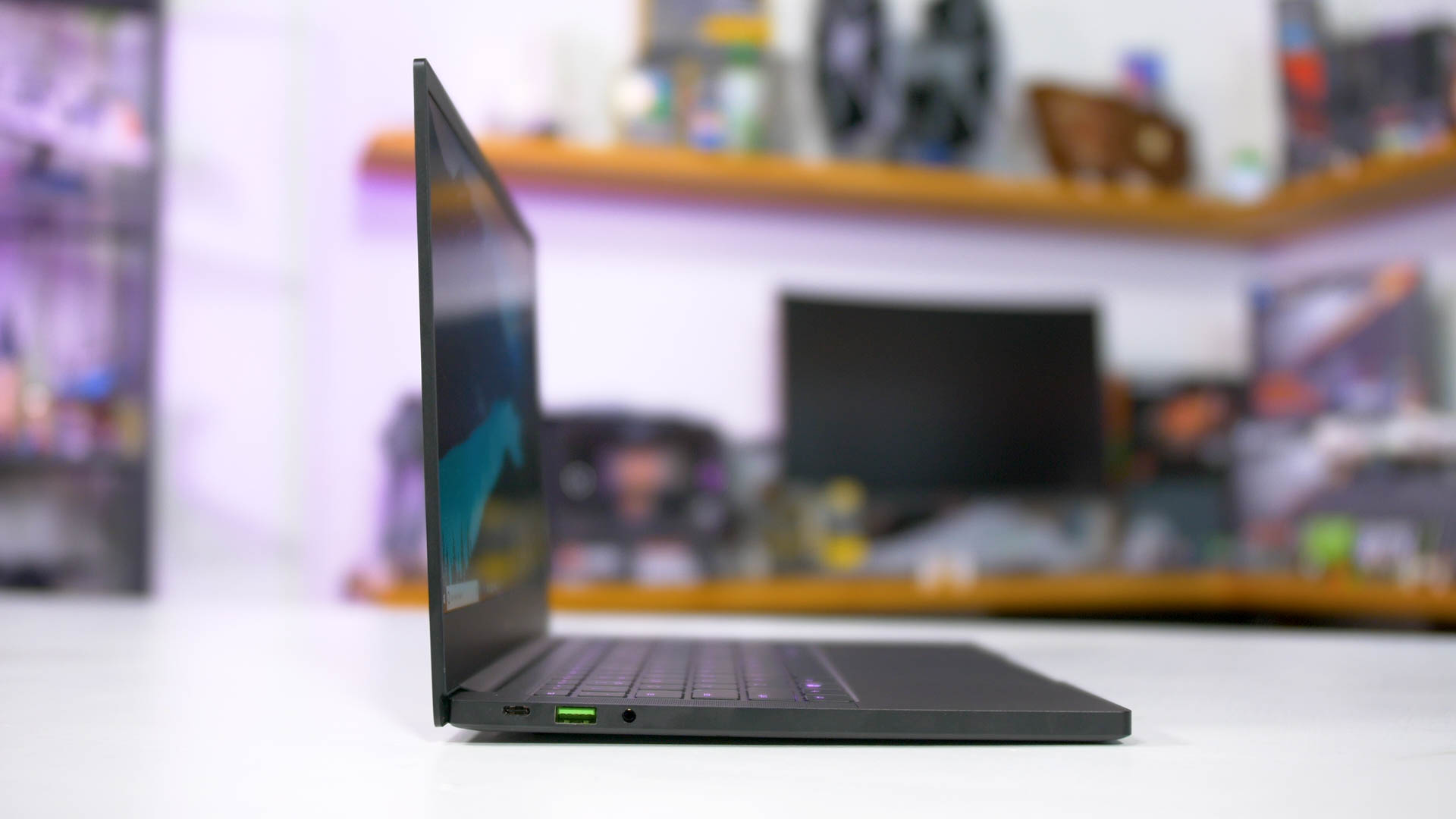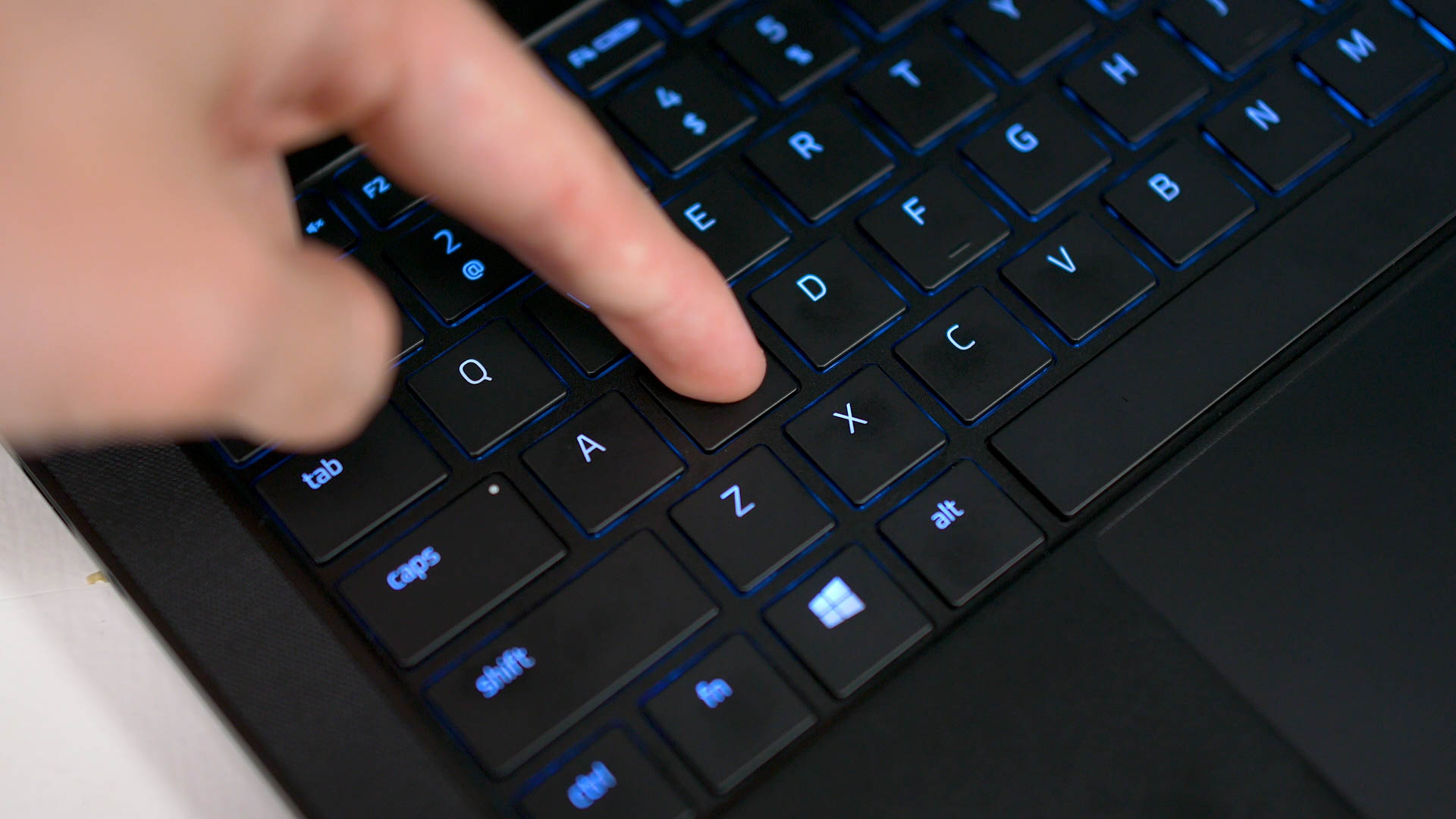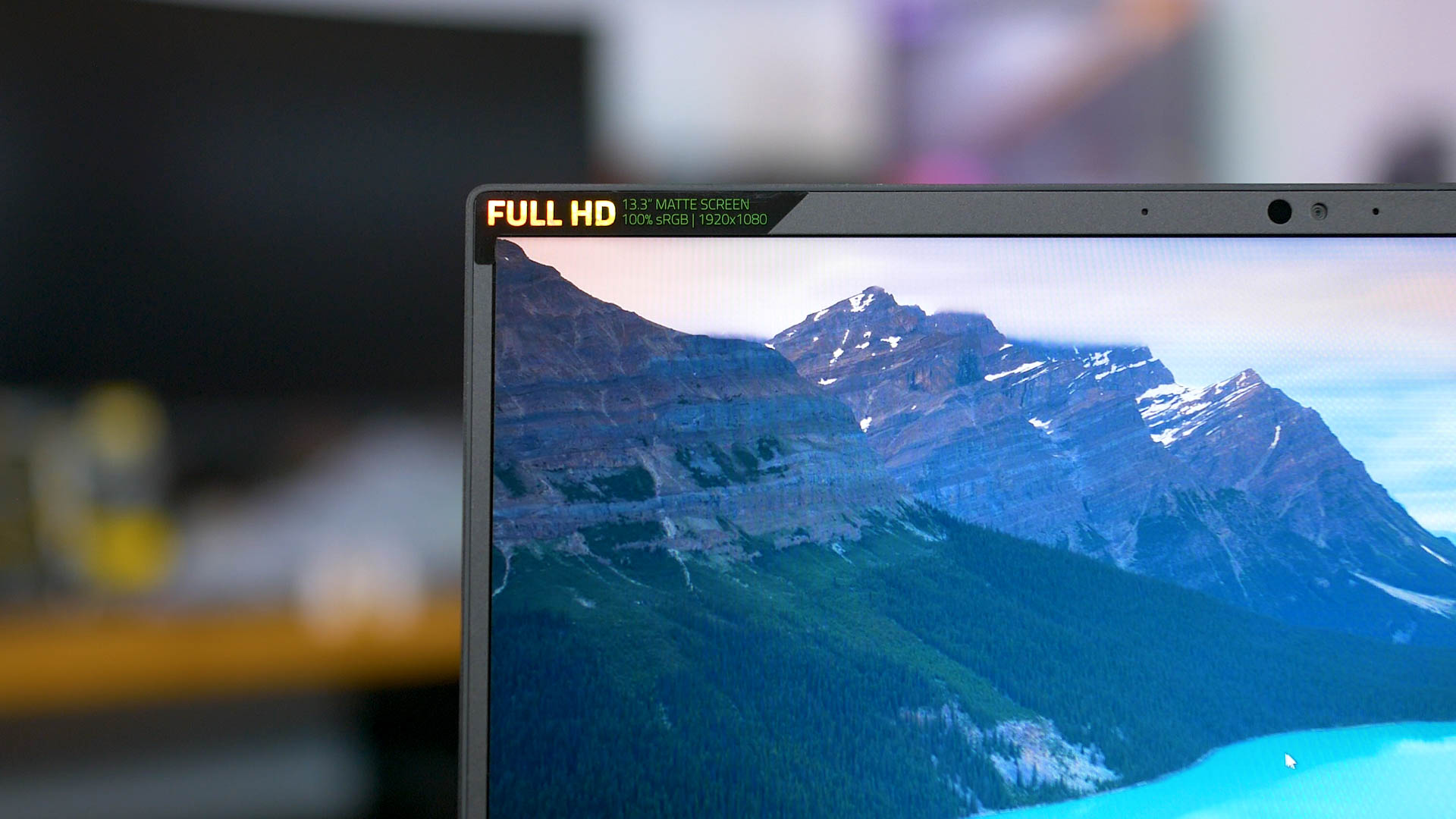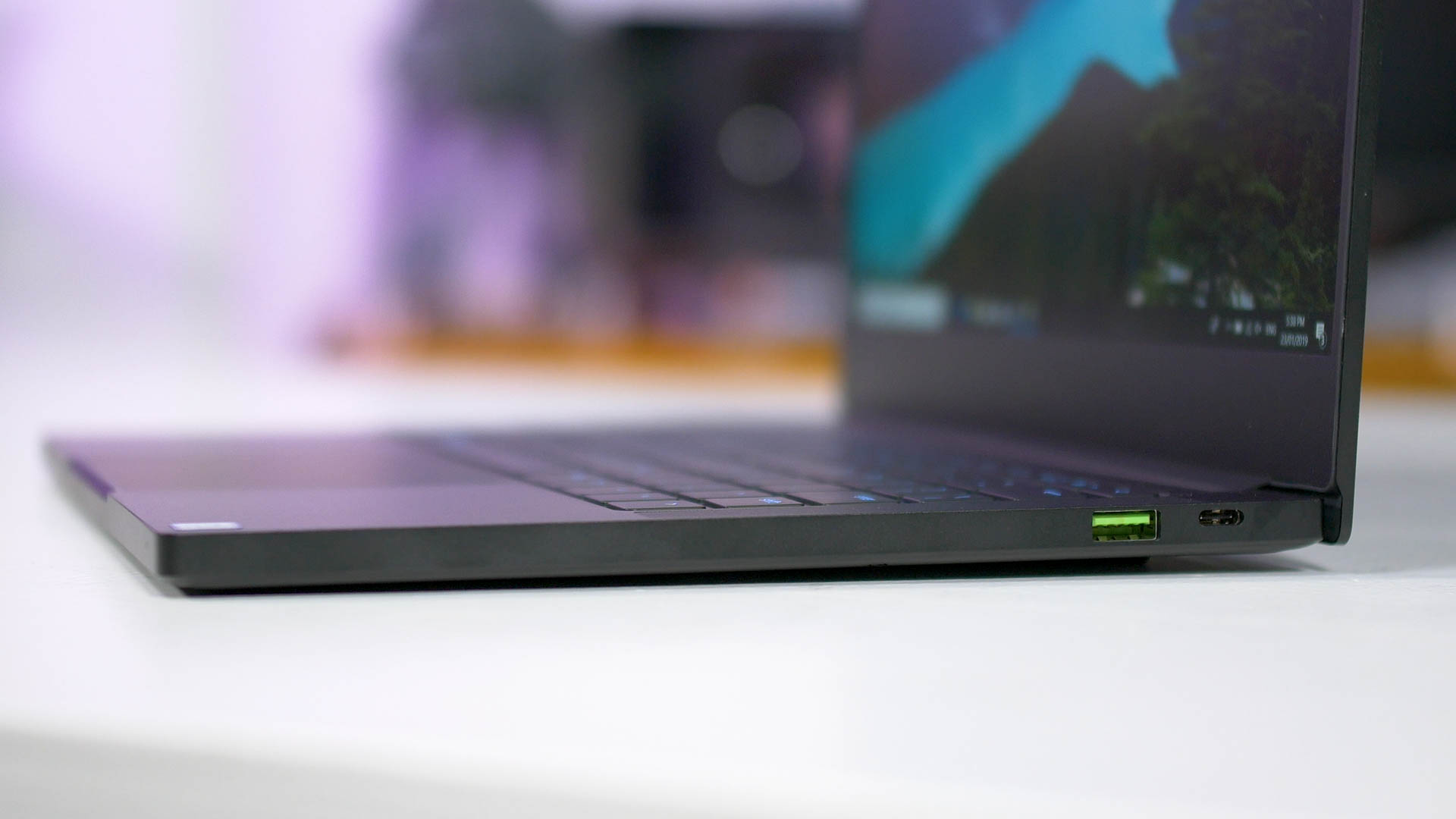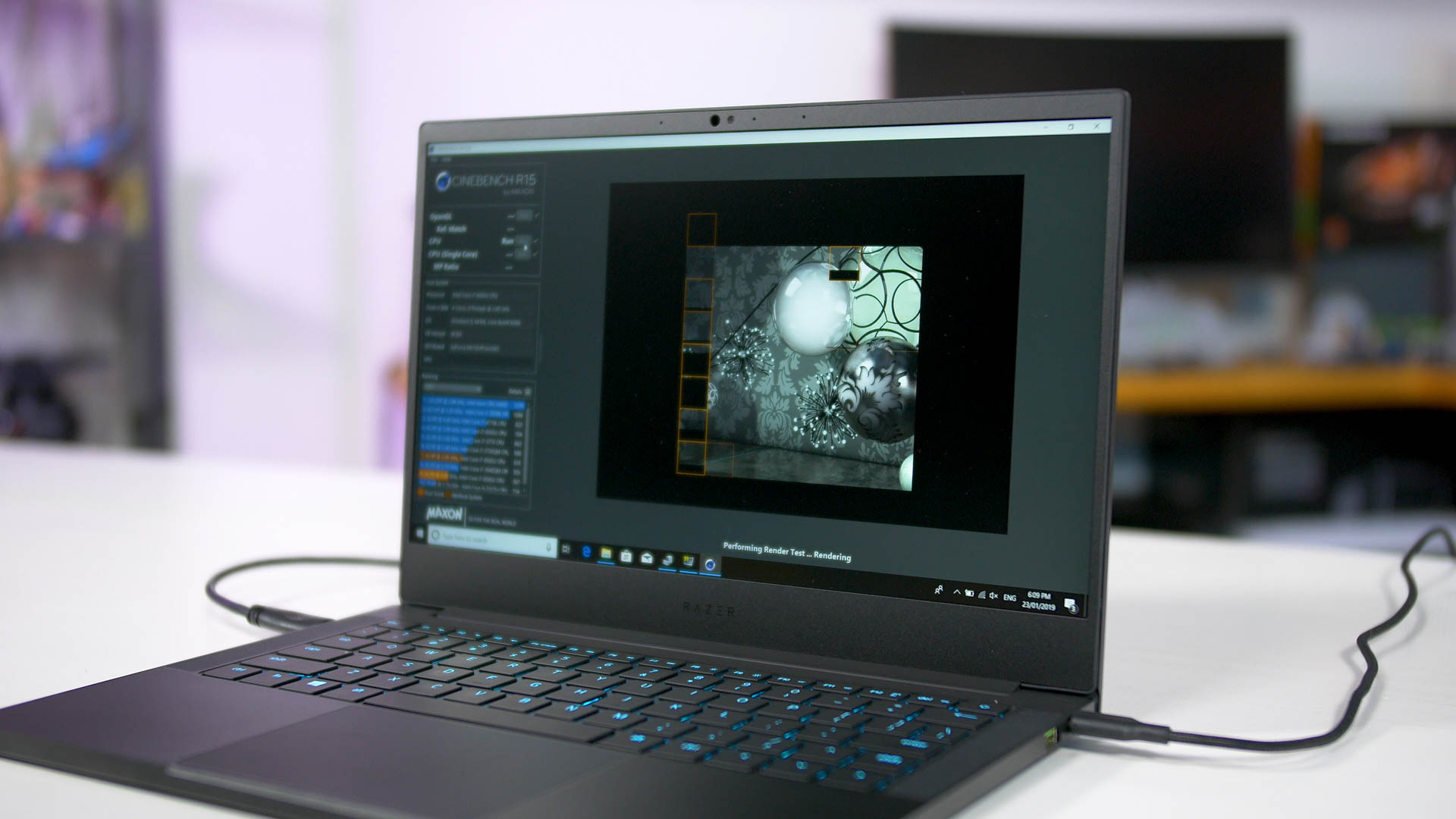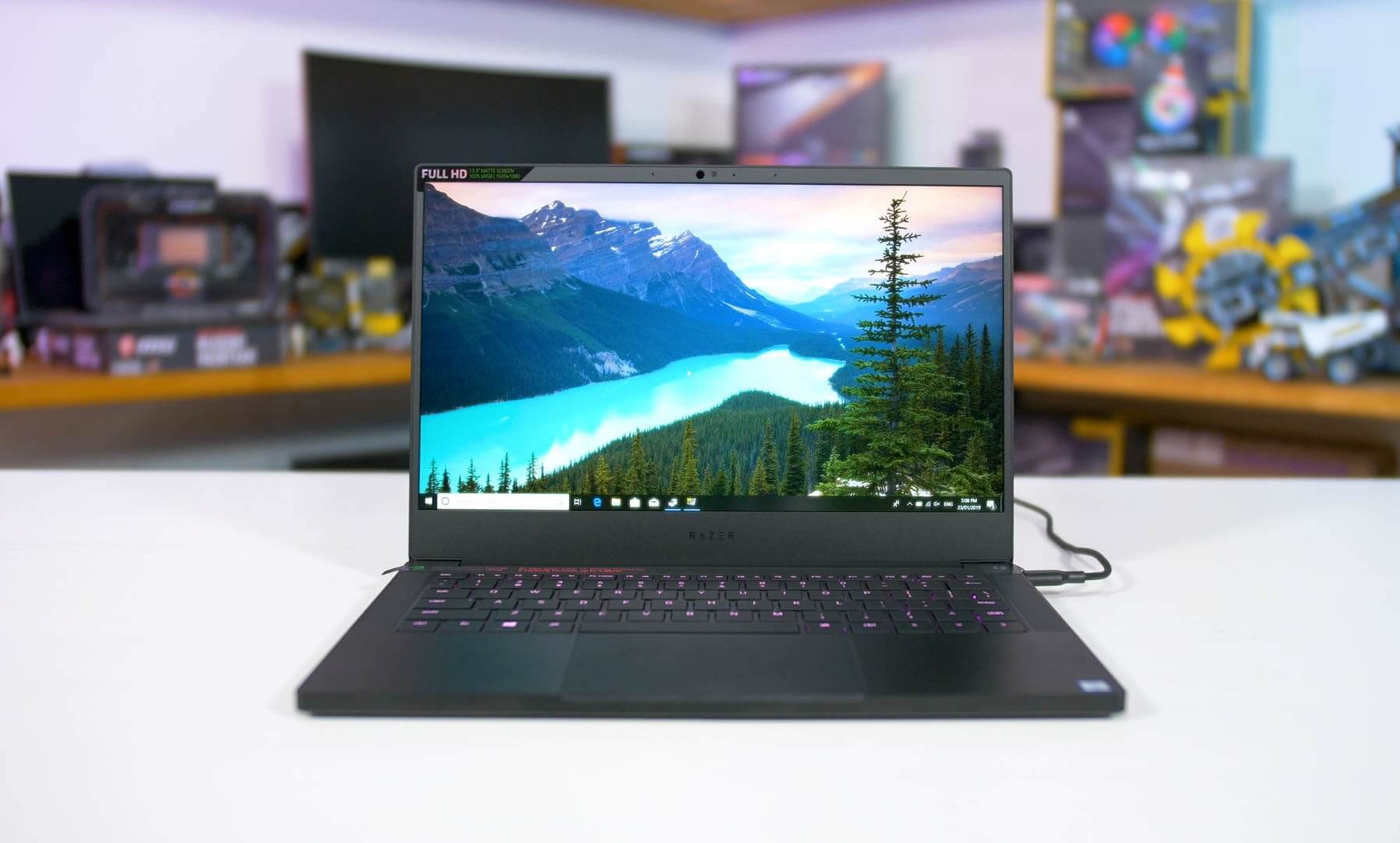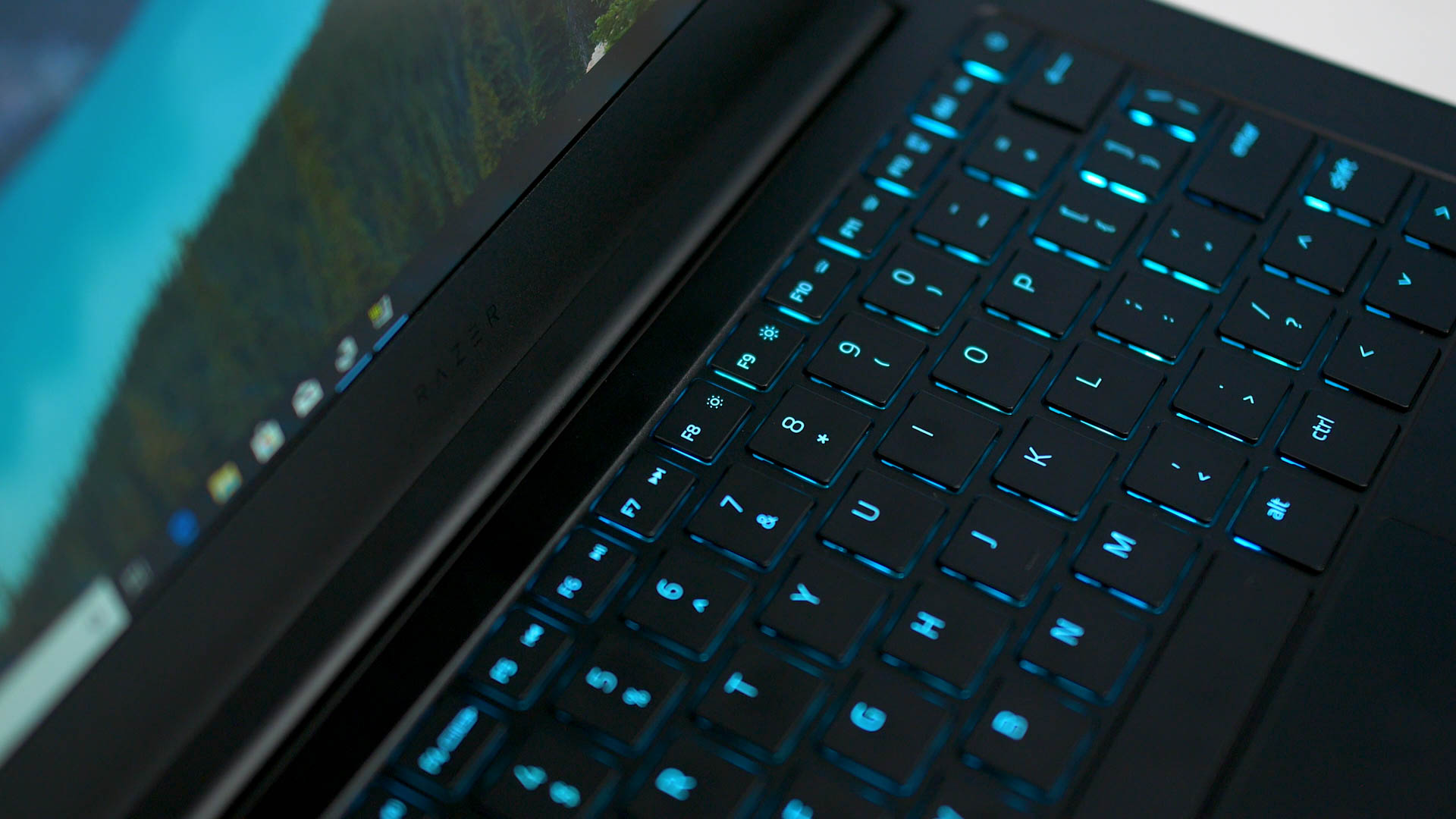Having reviewed nearly a dozen Razer laptops in the past few years of which this is our fifth Blade Stealth, it's always a delight to discover what's new and what's been improved on newer iterations.
The new Razer Blade Stealth uses a new design with new hardware. All models come with an Intel Core i7-8565U processor and a 13.3-inch 1080p display. The base model does not include discrete graphics, it packs a 256GB SATA SSD and 8GB of RAM. The graphics model, the version we received to review, has GeForce MX150 discrete graphics, a 256GB PCIe SSD, and 16GB of RAM. Both variants come with 53 Wh batteries, while in some regions there's an even higher-specced model with a 4K display and a 512GB SSD.
Following up to our look at Intel Whiskey Lake CPU performance, it's now time to properly check out the laptop we used for those benchmarks. Do note this laptop was released towards the end of 2018, so it's readily available and it's an impressive piece of hardware that's worth looking at in detail.
Pricing wise, we're looking at $1,400 for the base model, $1,600 if you want the MX150, and $1,900 if you also want the 4K touch display. As tends to be the case with Razer laptops, it's pretty expensive.
The previous Blade Stealth looked pretty decent and improved upon the chunky older designs in many ways, but this newer design steps things up another notch. It uses a similar build to the 15-inch Razer Blade in that it's a squarer design with slimmer bezels around the display. It's now at the point where the display dominates the lid area like a lot of modern ultraportables. We're not at crazy screen to body ratios just yet, but the new Blade Stealth doesn't feel like there's wasted space around the screen.
Build quality has always been a killer aspect to Razer's notebooks and that's still the case here.
The main chassis is a solid aluminium unibody with a black anodized finish, it's simple, it feels really sturdy and it looks fantastic. It's a bit of a fingerprint magnet but that's the case with most black metal laptops.
While the overall footprint is smaller than before thanks to its slimmer bezels, it is ~1mm thicker than previous models which makes next to no difference. The key area of interest is the weight, which varies between 2.8 and 3.0 lbs depending on the model. That's not particularly light for an ultraportable in 2019 but it's not heavy either.
Looking at the ports and features, it's all standard affair for this machine. There's a Thunderbolt 3 port, a USB-C 3.1 port and two USB 3.1 Type-A ports plus a headphone jack. While there are more USB ports on this laptop than its predecessor, that's come at the expense of the full-sized HDMI port which is disappointing. To hook up a monitor you'll likely need some sort of HDMI or DisplayPort adapter.
The Blade Stealth also has a basic 720p webcam above the display with Windows Hello support. There are speakers on either side of the keyboard that are fairly average as is the case with basically every laptop these days. The trackpad is expansive, accurate and responsive just like Razer's other trackpads. And the keyboard has a great tactile response to it, nice and clicky for a laptop keyboard which is what I like to see. It's also not cramped and includes full sized arrow keys as well as a range of handy functions mapped to the F-keys.
It wouldn't be a Razer product without some form of Chroma RGB lighting, but the new Blade Stealth includes it in a pretty limited form.
Rather than per-key RGB lighting for the keyboard like previous Razer laptops, the Blade Stealth just has a single backlight zone that encompasses the entire keyboard. This limits the available effects, but I don't think per-key RGB is all that necessary for an ultraportable and I'm sure this new single-zone design saves both space and battery.
The display, at least for the base and graphics models, is a 13.3-inch 1080p IPS at 60 Hz. Nothing too fancy, just your typical laptop-grade display. A key feature is that Razer is individually factory-calibrating every display, and they are boasting 100% sRGB coverage as well, which is great news for those that want color accuracy and decent colors for content creation.
This panel is one of the better ones I've seen in laptops, boasting a contrast ratio of 1300:1 and brightness up to 400 nits, which is above average in both regards. Color accuracy is good out of the box, too. The white point is perfect at 6500K and while that does fall away somewhat over the greyscale range, there's no noticeable color tint.
Greyscale deltaEs of 2.04 are just slightly higher than what we class as 'very good', while a saturation deltaE of 1.25, and a ColorChecker deltaE average of 1.55 are fantastic results. This level of accuracy is well above average for a laptop and makes it a great display for content creators.
Performance
Let's talk about performance. We're going to focus on the Blade Stealth with discrete graphics and workloads that specifically make use of the GPU to see how the MX150 makes an impact. We already covered the performance of the Core i7-8565U in a separate review. So if you're interested in how CPU-only workloads perform, or how the base model will perform in general, check out our Whiskey Lake CPU review.
As a refresher, the Blade Stealth uses the quad-core i7-8565U which is Intel's new high-end Whiskey Lake CPU built on 14nm++. Normally this CPU is configured to use a 15W TDP, however Razer has chosen to use the cTDP up state of 25W, which allows the chip to run at higher sustained clock speeds.
The rated clock speeds for the 8565U are 1.8 GHz base with a 4.6 GHz single-core Turbo and a 4.1 GHz all-core Turbo, but typically the 25W version of the chip hovers around 3.1 GHz during sustained non-AVX workloads.
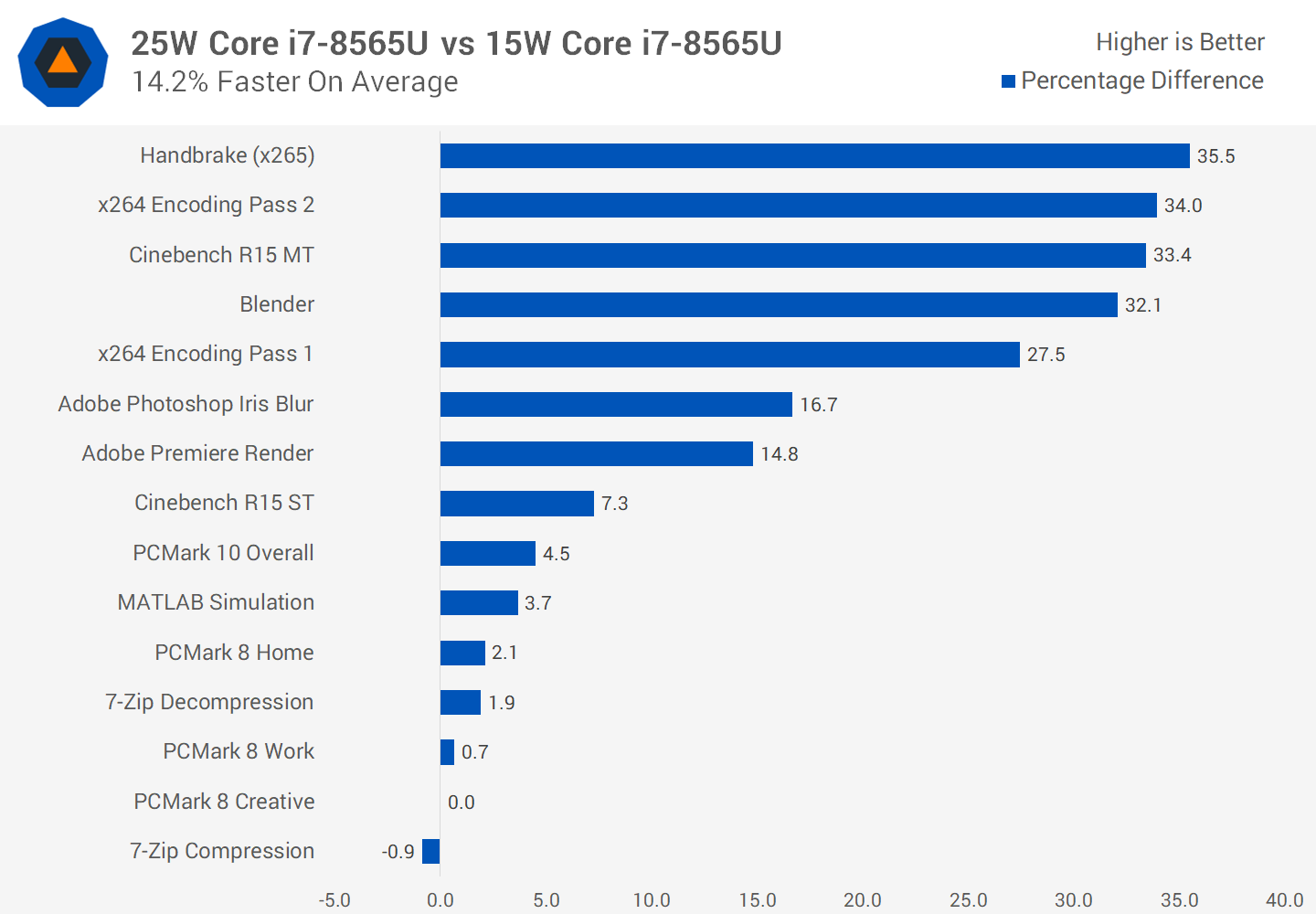
In CPU-heavy benchmarks the 25W 8565U is up to 33 percent faster than the 15W 8565U, so that's something to consider when comparing the Razer Blade Stealth to other 8565U laptops that use the standard 15W configuration. You won't see 33% gains in every app, short workloads are largely unaffected and single-thread performance is 4 to 7 percent higher, but for long encoding tasks it's a significant difference.

The 25W 8565U is also about 15% faster than the 25W Core i7-8550U, Intel's previous Kaby Lake Refresh CPU. And that margin increases to 20% on average over the 15W 8550U, with gains up to 38% in some workloads.
That could definitely justify an upgrade over the 8550U depending on the system you previously had. And of course, if you're coming from anything dual-core, like a Core i7-7500U or older, expect gains of 62% on average.

Now let's explore what the MX150 brings to the table...
It's crucial to note this is not the '1D12' variant of the GeForce MX150, rather this is the fully fledged version. Razer specifies this is a "25W" MX150 and looking at GPU-Z confirms this is a regular 1D10 model. So that's good news, though I wish Nvidia wouldn't be so confusing with their GPU names.

The MX150 comes into play in anything that's GPU accelerated, so that includes popular applications like Adobe Premiere. Here the MX150 has a noticeable impact on render times, both with and without Lumetri color processing effects.
With Lumetri effects, render times are more than halved and you can also see that this fully fledged MX150 is several minutes faster than the 1D12 version. Even without Lumetri effects, our render benchmark was 30% faster thanks to the discrete GPU.

Photoshop's Smart Sharpen filter also benefits significantly from GPU acceleration, again cutting processing times by more than half. Intel's integrated GPU in their 15W processors is extremely weak, the MX150 is easily more than twice as powerful and that plays out in this scenario.

CompuBench is a great benchmark for testing the compute performance of these GPUs across a range of synthetic tests, and looking at one of these results for optical flow again shows the power of the MX150.
It's around 2.6x faster than the UHD 620 integrated GPU, and it's also a decent 23% ahead of the Vega 8 GPU in AMD's Ryzen 5 2500U. That said, I expect the Vega 10 GPU in the Ryzen 7 2700U to provide similar performance to the MX150, albeit with lower CPU performance than the 8565U.
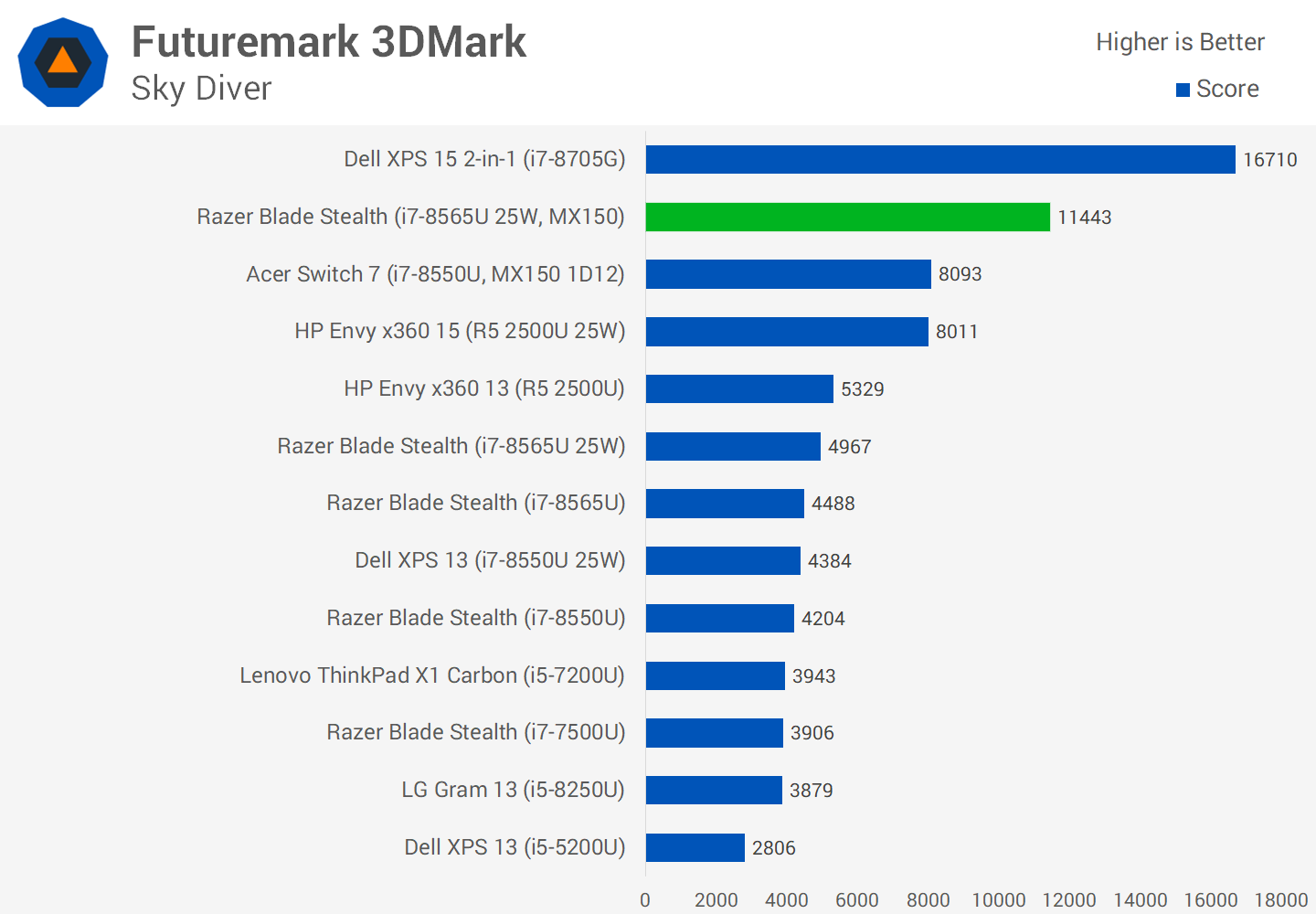
In 3DMark we also see enormous gains when comparing the MX150 to the regular Intel iGPU, it's typical to see more than double the performance, especially looking at graphics scores where in Time Spy, for example, the MX150 approaches being 3x as fast.
In terms of gaming this doesn't exactly turn an ultraportable into a gaming powerhouse but it certainly makes entry-level titles playable where they previously were not. Intel's UHD 620 is only suitable for 2D games and other simple things, whereas the MX150 is pretty capable at playing Fortnite, for example. You can expect 1080p, 60 FPS gaming in Fortnite using low settings.

A few other things worth mentioning regarding performance...
The Razer Blade Stealth has two performance modes, balanced and low power. Throughout this review we've used the balanced mode. When enabling the low power mode it limits the CPU to a TDP of around 8W, so performance is significantly reduced. That could come in handy to extend battery life though.
The cooler is always a contentious issue with Razer laptops because they tend to run hot and loud. But this is only somewhat the case with the Blade Stealth. CPU temperatures were relatively okay, hovering around the 75C mark which isn't that hot for a laptop. However the cooler is audible during heavy load.
My recommendation would be to use the manual fan speed control to turn down the fan speed to around 3000 RPM, although that depends on the conditions. When doing this I saw temperatures rise by around 7C but the laptop was much quieter and overall that was a better experience in my opinion. I think Razer's default fan curve is too aggressive and it could annoy people that buy this laptop and don't realize there is a manual fan slider.

The GeForce-equipped model comes with a 256GB Liteon CA3 PCIe NVMe SSD which performs well, especially in random workloads. It doesn't have the fastest sequential performance I've seen, but this is still a fast drive and should provide a noticeable performance upgrade compared to the SATA drive in the base model.

Another important area for laptops is battery life, however because we haven't been benchmarking many ultraportables lately we don't have a good selection of battery data to compare the Blade Stealth against. If you want detailed battery life information we recommend reading other reviews. From what I have been testing, I'd describe the battery life as above average for what it's worth.
Who Is It For?
The new Razer Blade Stealth offers an impressive overall package. The design is excellent, but that's been complemented this time around with top-end hardware for what is possible in this sort of ultraportable chassis design. We're getting the 25W version of the Core i7-8565U, so it will outperform most other laptops that use the 15W configuration, or are stuck on Kaby Lake Refresh.
We're also getting a fully fledged MX150 discrete GPU, so Razer has matched a powerful CPU with a powerful GPU for this form factor. Previous models left the GPU a little behind, with Razer pushing their Core V2 external GPU solution for those wanting to do some gaming. This new model is not a gaming powerhouse, but it's now suitable for Fortnite or Overwatch-type gaming without any external boxes.
The display is also impressive, delivering great color accuracy out of the box, making it suitable for creative applications. You're also getting Thunderbolt 3 plus full-sized USB, a great trackpad and what seems to be decent battery life. It's a really neat package overall.
Most of the concerns I have with the hardware package are minor. The fan is too aggressive by default, though that can be adjusted. Full-sized HDMI has been removed. And you're only getting a 256GB SSD in the models without a 4K display, though because it's an M.2 drive it should be upgradeable.
The other concern for some buyers will be the price. $1,400 for the base model without discrete graphics sets a big premium. Yes, you get the 25W Core i7-8565U, but there's just 8GB of RAM and a 256GB SATA SSD. Asus offers the 15W 8565U plus 16GB of RAM and a 512GB SSD for $1,200 in the ZenBook 14 UX433FA. So you'd have to really want the extra CPU performance to justify spending more while also sacrificing RAM and storage capacity. The RAM in particular hurts the Blade's chances to fight off value competitors.
Then there's the $1,600 graphics model, the one we reviewed. In some ways I can see this price being justified, not a lot of systems offer a 25W quad-core plus a full MX150 GPU in this sort of form factor. And you're getting 16GB of RAM. When you consider that a lot of laptops advertised as having an i7-8565U and MX150 will have the 15W CPU configuration and the slower 1D12 MX150, I do think there's some merit in spending more money for the outright best performance.
Of course, if you require less performance, you may be perfectly satisfied with the MX150 1D12 and even, say, a previous gen i7-8550U. This combination will end up 20 to 30 percent slower than the Blade Stealth, but you can find similar form factor laptops with that combination that are more than 30 percent cheaper.
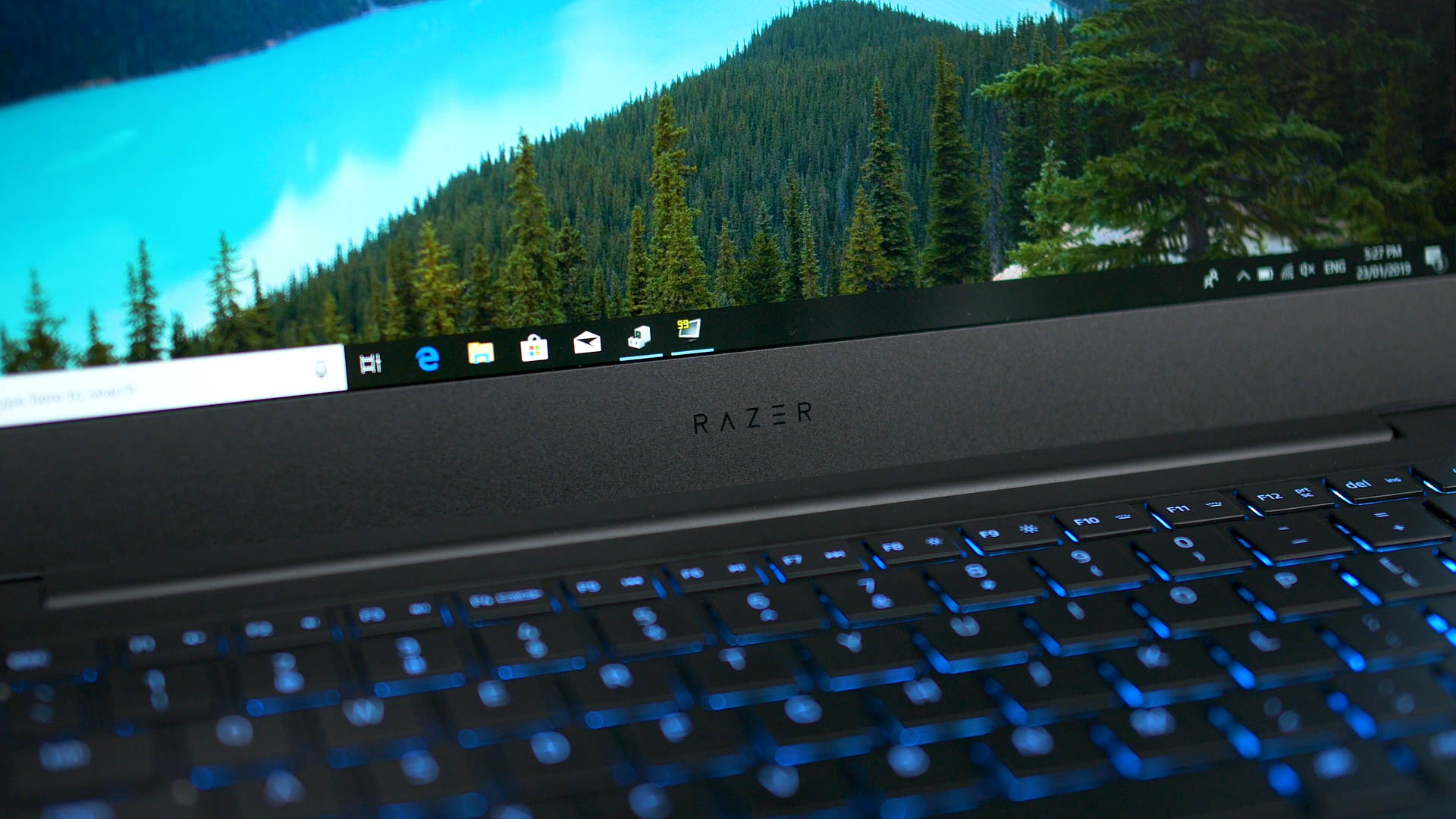
It's not unusual for top-end products with the fastest hardware to offer less than optimal bang for buck; there's always a premium associated with getting the fastest or best products. The question is whether you're willing to pay extra, or whether you'd be satisfied with the multitude of other options on the market.
As a premium ultrabook, the Razer Blade Stealth delivers once again.
